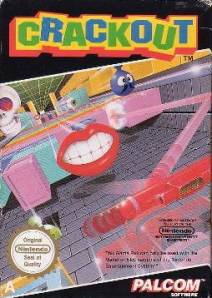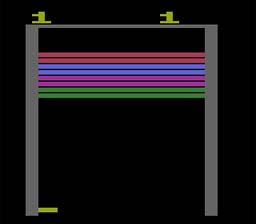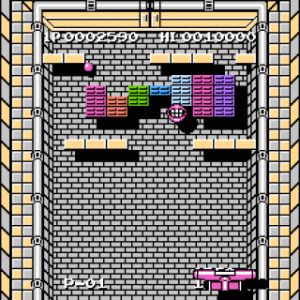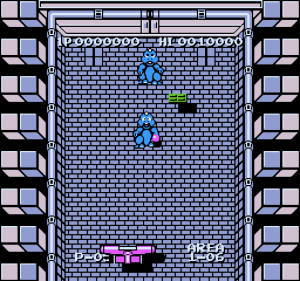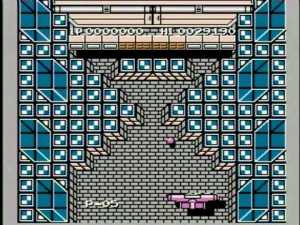It’s been 6 weeks since the last review due to technical difficulties so as way of apology, today’s review is a game released only for the European PAL area and published by a subsidiary of a company that may be familiar to gamers, Konami.
Due to third- party game publishers at the time only allowed to release 5 games per year for the Nintendo Entertainment System, Konami had the ingenious method of creating subsidiary companies to release more than the 5 games they were allowed to per year. In North America the company was named Ultra, whilst in Europe it was Palcom. Palcom specialized on releasing games that were not released in America, games such as Road Fighter and this one, Crackout.
So what is Crackout? Crackout having been released in 1991 is in fact a clone of Breakout. For those not in the know, Breakout was introduced originally in 1976 by Atari, in which you have to destroy rows of bricks with a ball with the help of a paddle that you control at the bottom of the screen. It deflects the ball back onto the bricks and as a guard so that the ball does not go out of play. Crackout works in exactly the same way, but improved on Breakout by adding features that was not present on the original game.
Crackout is split into 4 zones (like the Crystal Maze), of which there are 11 levels (somewhat similar to the Crystal Maze). The zones are the Cubic Zone, Mirror Zone, Tube Zone and Final Zone (not quite as fun as the Crystal Maze. Progression is made either by destroying all the bricks on the screen or on the rare instance you would encounter “The Konami Man” who would fly from the top to the bottom of the screen transporting you to the next level. Assisting you along the way are power-ups which can come in the form of 1-ups, launching missiles that can destroy enemies, or multiple balls. Although this is common-place in Breakout clones now, for the type this was a welcome addition to a classic concept. It makes the game more interesting and makes you want to destroy the enemy on the screen to get the power up to help complete the level. Every few levels, you encounter a boss which again adds a different dimension to the game play and keeps it interesting.
In terms of controls, well you use the left and right d-pad to move the barrier at the bottom to ensure the ball does not go out of play. To launch the ball, you press the button B, and that button is used should you get a projectile power up to use. The controls are easy to use and responsive, which is good for a game that can build up speed and requires the player to have the reflexes of a lynx that’s had a vindaloo curry. It’s not the same as using a trackball or paddle akin to the Atari 2600, but it’s the next best thing. There is unfortunately no music in the game so you would need to put on your iPod or TDK cassette to entertain your ears, however the sound effects are crisp and relevant to the game, so all is not lost however some music would have been nice.
So to sum the game up, yes it is a Breakout clone however it is a jolly good Breakout clone. It isn’t a game that you can write reams of paper about, as it is in essence a simple yet classic game that added a twist with power-ups and weapons to keep the game fresh. If you do get the chance to find this game out in your local retro game stores or on your favourite online retailer (ahem eBay) then it is worth grabbing. If you have 15 minutes to spare and don’t want to complete Super Mario Bros again in under 6 minutes (like we all do) then pick up Crackout. Whilst you’re at it, get your parents involved as it is a game suitable for all ages and is easy to pick up and play. Who said games had to be about powering up guns or playing repetitive football matches…
Rating – 4 out of 5
